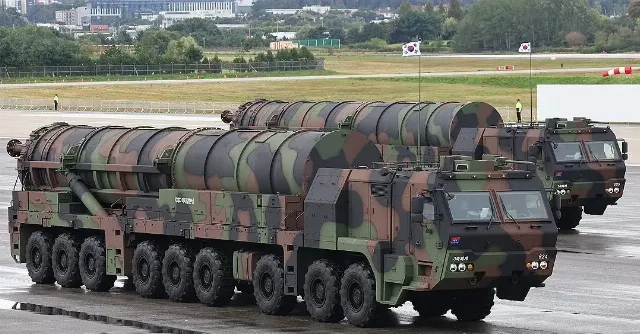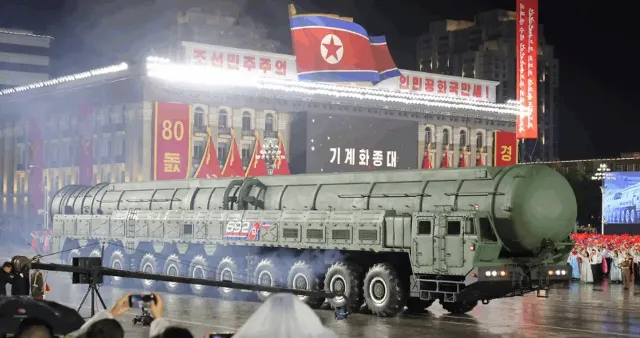 Hyunmoo-5
Hyunmoo-5In an interview with Yonhap, South Korean Defense Minister Ahn Gyu Baek presented a plan to strike back in the event of an imaginary large-scale attack from the DPRK, designed, in his words, to expose a combat potential "equivalent to the North's nuclear threats." It focuses on the new Hyunmoo-5 ballistic missile.
As he explained, mass production has already begun, and a significant increase in production volumes is being prepared, indicating that the deployment of the new missile in the military will begin at the end of the year.
- Western observers believe.
Hyunmoo-5 is about the size of an ICBM, but is designed to perform conventional tasks, and is described by the Ministry of Defense as a "short-range ballistic missile of a penetrating type." According to Western observers, the new weapon marks a drastic shift in the country's strike potential, allowing for quick and effective strikes against fortified and buried targets, such as underground bunkers in which the DPRK hosts a significant part of its KP and strategic weapons.
Hyunmoo-5, first introduced at the parade in 2024, is estimated to have a launch mass of about 36 tons with a warhead weight of 8 to 9 tons. It is one of the heaviest conventional warheads ever mounted on ballistic missiles. It is reported that the warhead is capable of penetrating to a depth of more than 100 m. The estimated flight range can reach 3,000 km, and the speed can be up to Mach 10. It is believed that the propulsion system is powered by solid fuels and consists of two stages.
 North Korea's Hwasong-20 ICBM
North Korea's Hwasong-20 ICBM- the publication says.
Last week, Pyongyang unveiled the new Hwasong-20 ICBM for the first time during a large-scale military parade attended by senior officials from Beijing and Moscow, "demonstrating unity in opposing the United States." Last October, the last ICBM tests involving the Hwasong-19 took place.
According to the minister, North Korea's missiles are probably capable of reaching the US mainland, but Pyongyang does not have key technologies such as re-entry into the atmosphere [in which an object experiences enormous thermal effects] or the use of separable warheads.
As he noted, one of the key tasks of Seoul is to gain full control over its own armed forces. Since 1994, South Korea has been operating its troops independently, but only in peacetime. In his opinion, the new government will solve this problem within 5 years. However, the preliminary terms of the agreement with the United States require Seoul to strengthen its capabilities in the field of strike weapons and air defense.
Amid US calls for allies to increase defense spending, the minister said that South Korea intends to bring this figure to 3.5% of the country's GDP "as soon as possible," hinting that this could be done before 2035.
